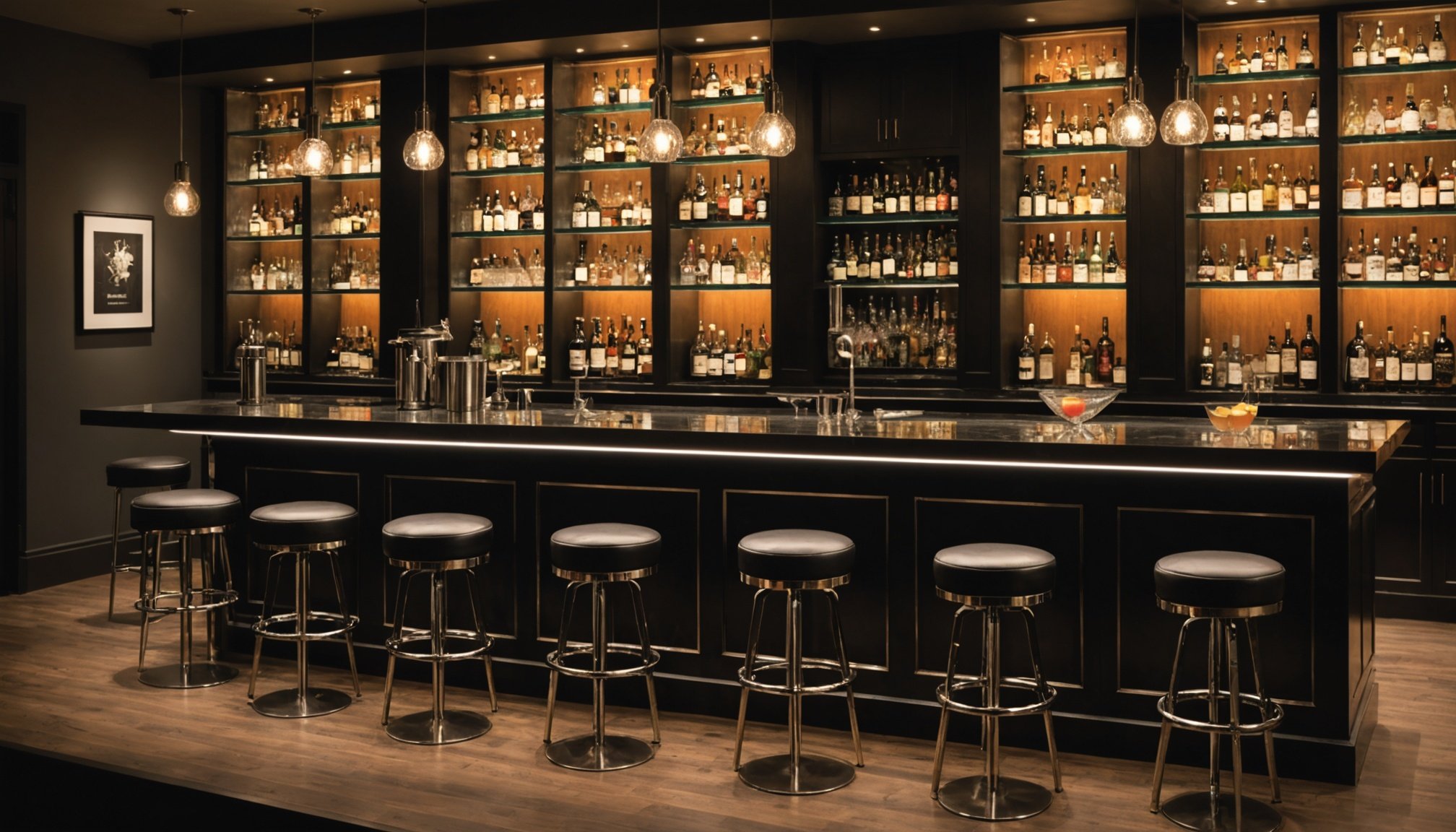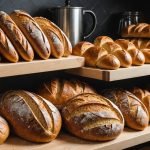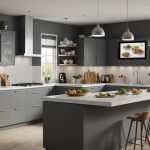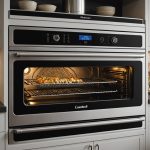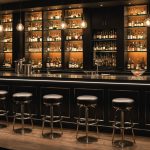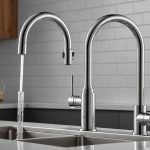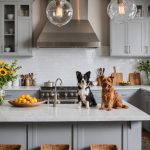Designing a high-volume bar requires more than just aesthetic appeal; it’s about maximizing efficiency in cocktail preparation. The layout directly impacts speed and quality, making it essential for bartenders to craft drinks seamlessly. This guide offers innovative design solutions to enhance workflow and ensure optimal service during busy hours. Prepare to elevate your bar’s functionality, ensuring every cocktail is a masterpiece delivered on time. Let’s explore how to create a space that works as hard as you do.
Understanding High-Volume Bar Layout Principles
Designing a bar that can handle high-volume demands requires strategic planning and organization.
Additional reading : Essential Tips for Successfully Installing a Commercial Espresso Machine in Your Small Café
Importance of Workflow Efficiency in High-Volume Settings
In high-volume environments, workflow efficiency is paramount. A well-designed bar layout minimizes unnecessary movement, reducing the time bartenders spend fetching ingredients or tools. This efficiency directly impacts service speed and customer satisfaction. Consider a bar where everything is within arm's reach—such a setup allows bartenders to serve more customers swiftly, enhancing the overall experience.
Key Elements of an Effective Bar Layout
An effective bar layout design incorporates several key elements. These include strategically placed workstations, easy access to frequently used items, and a clear path for both staff and patrons. Implementing these elements ensures that the bar operates smoothly, even during peak hours. A well-thought-out design can significantly increase the bar's efficiency and profitability.
In parallel : Mastering holiday rush: proven strategies for effective resort dining management during peak seasons
Common Layout Types for Busy Bars
High-volume bars often employ specific layout types to optimize efficiency. Common designs include the U-shaped, L-shaped, and linear layouts. Each offers unique advantages, such as maximizing space or facilitating a smooth workflow. Choosing the right layout depends on the bar's size, shape, and specific operational needs.
- U-shaped: Ideal for multiple bartenders.
- L-shaped: Maximizes corner spaces.
- Linear: Best for long, narrow spaces.
These layouts help create a seamless and efficient environment, crucial for high-volume success.
Optimal Workflow Strategies for Bartenders
Enhancing efficiency in high-volume bar settings requires strategic workflow adjustments.
Analyzing Bartender Movement and Actions
Understanding the bartender workflow is crucial for optimizing efficiency. Observing how bartenders move and interact with their environment can highlight areas for improvement. For instance, minimizing unnecessary steps or reaching can significantly enhance service speed. Analyzing these movements helps identify patterns and potential bottlenecks that slow down service during peak hours.
Streamlining Drink Preparation Processes
Efficient service hinges on streamlined drink preparation. Organizing ingredients and tools in a logical sequence reduces preparation time. Consider a setup where frequently used items are easily accessible, allowing bartenders to prepare drinks with minimal delay. Implementing standardized processes ensures consistency and speed, vital for maintaining a high level of customer satisfaction.
- Pre-measured ingredients
- Dedicated preparation zones
- Standardized glassware placement
Reducing Bottlenecks During Peak Hours
Addressing bottlenecks is essential for maintaining an efficient workflow. During peak hours, ensuring a clear path for bartenders prevents congestion and delays. Strategic placement of workstations and resources can alleviate these issues. Regularly reviewing and adjusting the layout based on observed traffic patterns can further enhance efficiency, allowing bartenders to operate smoothly even under pressure.
Equipment Placement for Maximum Efficiency
Optimizing equipment layout is crucial for high-volume cocktail bars.
Essential Equipment for High-Volume Cocktail Bars
In high-volume cocktail bars, having the right bar equipment is essential. Key items include speed rails, blenders, shakers, and ice bins. Each piece of equipment plays a vital role in maintaining a quick and efficient service. Ensuring these items are strategically placed can drastically reduce preparation time and enhance workflow.
Strategic Placement of Tools for Quick Access
Placing bar equipment strategically is vital for efficiency. Tools should be within easy reach to minimize unnecessary movement. Consider the following placement strategies:
- Speed rails: Directly below the counter for quick access to spirits.
- Ice bins: Centrally located to serve multiple workstations.
- Blenders and shakers: Positioned at arm's length to reduce reaching.
These strategies help bartenders work seamlessly, improving overall service speed.
Importance of Ergonomics in Equipment Layout
Ergonomics is a critical factor in equipment placement. An ergonomic layout reduces strain and fatigue, allowing bartenders to maintain high productivity levels. Proper height and spacing of equipment ensure comfort and efficiency. This thoughtful arrangement not only enhances performance but also contributes to a safer working environment, minimizing the risk of injury.
Space Management in High-Volume Environments
Optimizing space in high-volume bars is crucial for maintaining efficiency and customer satisfaction.
Utilizing Vertical Space for Storage
Maximizing vertical space is an effective strategy in bar design. Installing shelves above workstations can significantly increase storage capacity without compromising floor space. This approach allows for easy access to frequently used items, enhancing workflow. Consider a setup where glassware and spirits are stored vertically, freeing up counter space for preparation and service.
- Wall-mounted shelves
- Overhead racks
- Hanging storage solutions
Designing for Customer Flow and Comfort
A well-planned bar design considers both staff and patron needs. Ensuring smooth customer flow is essential, especially in crowded settings. Creating clear pathways and strategically placing seating areas can enhance comfort and accessibility. This design not only improves the customer experience but also minimizes disruptions to staff operations.
Balancing Space Between Staff and Patrons
Balancing space between staff and patrons is key to a successful bar layout. Allocating sufficient room behind the bar for bartenders to move freely while maintaining ample space for customers ensures efficient service. This balance is achieved by thoughtful planning and space optimization, allowing for a harmonious environment that caters to both parties' needs.
Visual Examples of Effective Bar Setups
Exploring successful bar layout examples can provide valuable design inspiration for high-volume environments.
Case Studies of Successful High-Volume Bars
Examining case studies of high-volume bars offers insights into effective bar layout examples. For instance, a renowned bar in New York implemented a U-shaped design, maximizing bartender efficiency by reducing steps. Another example, a popular London venue, adopted a linear layout to optimize space in their narrow setting. These real-world applications serve as design inspiration for those seeking to enhance their bar's functionality.
Diagrams Illustrating Optimal Bar Layouts
Visual aids, such as diagrams, can clearly demonstrate the benefits of efficient bar layout examples. Consider a diagram showing a U-shaped layout with strategically placed speed rails and ice bins. These illustrations help visualize how design inspiration principles are applied, making it easier to replicate successful setups.
Visual Comparisons of Inefficient vs. Efficient Designs
A side-by-side visual comparison can highlight the difference between inefficient and efficient bar layout examples. Inefficient designs often feature cluttered workspaces and poorly placed equipment. In contrast, efficient layouts showcase organized stations and logical flow. Such comparisons offer design inspiration by underscoring the practical benefits of thoughtful planning.
- Efficient Layouts: Clear paths, strategic equipment placement, ergonomic consideration
- Inefficient Layouts: Cluttered spaces, unnecessary movements, poor workflow
Managing Customer Volume Effectively
Handling peak customer loads efficiently is crucial for maintaining service speed and customer satisfaction.
Techniques for Handling Peak Customer Loads
Effectively managing customer volume involves implementing strategic techniques that enhance service speed. During peak times, deploying additional staff can help manage the influx, ensuring that each patron receives prompt attention. Training staff to multitask efficiently is also critical, enabling them to handle multiple orders simultaneously without compromising quality.
Importance of Queue Management Systems
A robust queue management system is vital in high-volume settings. It organizes the flow of patrons, reducing wait times and enhancing the overall experience. Systems such as digital ticketing or mobile apps allow customers to check their place in line, minimizing frustration. This proactive approach to customer management ensures that service remains smooth and efficient.
Creating a Welcoming Atmosphere During Busy Times
Even during busy periods, maintaining a welcoming atmosphere is essential. Simple gestures, like acknowledging waiting customers or offering complimentary snacks, can make a significant difference. These actions demonstrate a commitment to excellent customer management, fostering a positive environment that encourages repeat visits.
- Staff deployment
- Digital queue systems
- Customer engagement strategies
By focusing on these elements, bars can effectively manage customer volume while maintaining high service speed.
Enhancing Staff Interactions and Communication
Fostering effective teamwork is essential for high-volume bar success.
Strategies for Improving Staff Collaboration
In high-volume bar settings, fostering team communication is crucial. Regular team meetings and briefings can ensure everyone is aligned with the bar's goals and procedures. Implementing a buddy system encourages staff efficiency by pairing experienced employees with newer ones, facilitating knowledge sharing and support.
Importance of Clear Communication Channels
Establishing clear communication channels is vital for seamless operations. Using tools like walkie-talkies or mobile apps can enable instant staff communication, helping to coordinate efforts and manage customer flow effectively. Visual aids, such as shift schedules and task boards, also play a significant role in maintaining staff efficiency.
Training Staff for High-Volume Scenarios
Proper training is essential for preparing staff to handle high-volume scenarios. Simulation exercises and role-playing can enhance team communication skills, ensuring staff are ready to tackle busy shifts. Training should focus on multitasking, prioritizing tasks, and maintaining a positive attitude under pressure.
- Regular briefings
- Buddy system
- Simulation exercises
By focusing on these strategies, bars can enhance staff efficiency and ensure effective team communication, ultimately leading to a more successful and harmonious work environment.
Tips for Designing a Customer-Focused Bar
Creating an inviting space enhances the overall customer experience.
Understanding Customer Needs in a High-Volume Setting
In high-volume bars, understanding customer needs is crucial for a successful bar design. Patrons seek a seamless experience where they can enjoy their drinks without unnecessary delays. An effective design considers the flow of people, ensuring that customers can move freely without crowding. This attention to detail enhances the overall customer experience, encouraging repeat visits.
Designing for Customer Comfort and Accessibility
Customer comfort is a priority in any bar design. Comfortable seating, clear signage, and accessible facilities contribute significantly to a positive experience. Ensuring that pathways are wide enough for easy navigation helps accommodate all patrons, including those with mobility challenges. A well-thought-out design makes the environment more welcoming and inclusive, enhancing the customer experience.
- Comfortable seating arrangements
- Clear, visible signage
- Wide, accessible pathways
Incorporating Feedback into Design Improvements
Regularly incorporating customer feedback is essential for refining bar design. Listening to patrons' suggestions can highlight areas for improvement, such as lighting, acoustics, or seating arrangements. By valuing customer input, bars can make informed adjustments that enhance the customer experience. This proactive approach not only improves satisfaction but also fosters loyalty.
Adapting Traditional Bar Layouts for High Volume
Modifying existing designs to meet high-volume demands.
Evaluating Traditional Designs for High-Volume Use
When considering traditional bar design for high-volume settings, it's essential to assess their capacity to handle increased demands. Traditional layouts often prioritize aesthetics over functionality, which can hinder efficiency. Evaluating these designs involves identifying areas where adaptation strategies can enhance service speed and workflow. For example, a classic bar with a central island might benefit from additional workstations to accommodate more bartenders during peak hours.
Modifications to Enhance Efficiency
Adapting a traditional bar design requires thoughtful modifications. Adaptation strategies might include integrating modern equipment, optimizing storage solutions, or reconfiguring seating arrangements. These changes aim to streamline operations and improve customer service. Consider implementing a dual-layer speed rail system to increase accessibility to frequently used spirits. Such modifications ensure that the bar can handle high-volume demands without sacrificing the traditional aesthetic.
Examples of Successful Adaptations
Several bars have successfully adapted traditional bar designs to meet high-volume needs. For instance, a historic pub in Boston added additional service points and reorganized its back bar to enhance efficiency. Another example is a Parisian café that incorporated adaptation strategies by expanding its bar counter, allowing for a more seamless workflow. These adaptations demonstrate the potential for traditional designs to thrive in high-volume environments.
- Dual-layer speed rails
- Additional service points
- Expanded bar counters
Future Trends in Bar Design for High Volume
Exploring the intersection of technology and sustainability in modern bar design.
Emerging Technologies in Bar Design
The future of bar design is being shaped by innovative technologies. High-volume bars are increasingly adopting automated systems, such as robotic bartenders and AI-driven inventory management, to enhance efficiency. These bar design trends not only speed up service but also reduce human error. As technology advances, we can expect further integration of smart devices that streamline operations and improve customer interactions.
Sustainability Considerations for High-Volume Bars
Environmental consciousness is a growing focus in bar design trends. Future innovations are likely to include sustainable materials and energy-efficient appliances. Bars are beginning to incorporate eco-friendly practices, such as water-saving technologies and waste reduction systems. By prioritizing sustainability, high-volume bars can reduce their environmental impact while appealing to eco-conscious consumers.
Predictions for the Future of Bar Layouts and Operations
Looking ahead, bar design trends suggest a shift towards more flexible and adaptive layouts. Future innovations may involve modular designs that allow for quick reconfiguration to accommodate varying customer volumes. Additionally, the integration of virtual reality (VR) for immersive customer experiences is a potential game-changer in bar operations.
- Automated systems
- Sustainable materials
- Modular designs
These trends highlight the evolving landscape of high-volume bar environments, driven by technological advancement and sustainability.

